Welcome to the page dedicated to my London Guided Walks. Based on the blog, these walks will take you on a journey through the history of an area of London, discovering how the city has evolved to the place we see today.
A NEW WALK
The Lost Landscape and Transformation of Puddle Dock and Thames Street
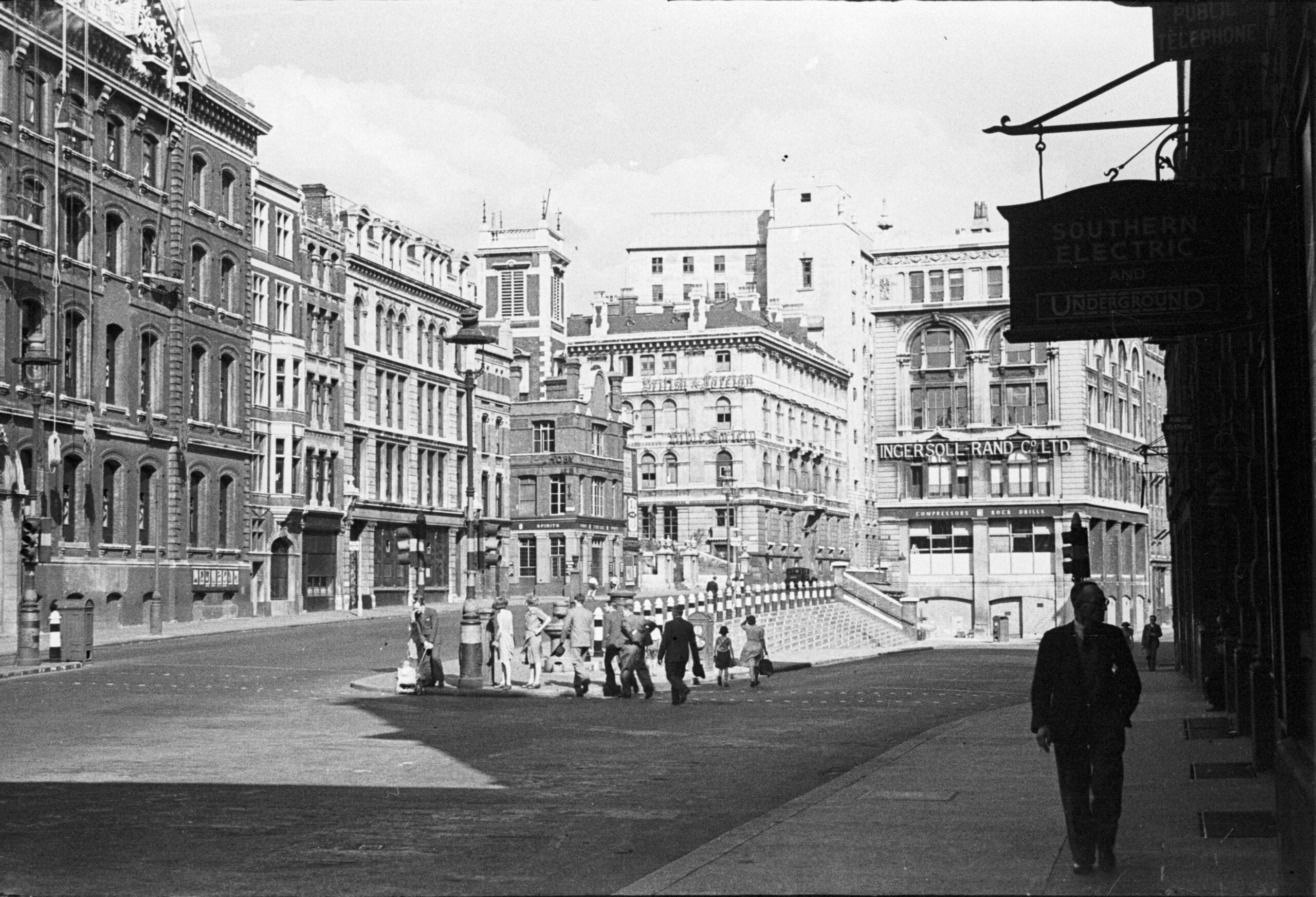
There are plans for the possible redevelopment of the area around Puddle Dock, Baynard House and St Benet’s Church, between Queen Victoria Street and the Thames.
This area is in need of some change. It is a product of planning first developed in the 1940s for the post-war transformation of London. A plan where the car was a priority for transport through the City.
Post-war redevelopment exposed the remains of 15th century Baynard’s Castle. Puddle Dock was filled in and Upper Thames Street extended on land reclaimed from the river.
The original route of Upper Thames Street was lost, and St. Benet’s Church isolated between roads and the City of London School.
The walk explores the long history of the area between Queen Victoria Street and the Thames.
Rubbish dumps, Thames Stairs, Roman and Medieval remains, post war planning, and how this created a very unfriendly environment for the pedestrian. How apparently historical streets are not what they seem. The first theatre built in the City of London for 300 years, within the walls of an old warehouse, St. Paul’s sightlines and some remarkable industrial building decoration.
The possible future development of the area will also be considered.
The walk will use plenty of my father’s photos from the late 1940s, and my photos from the late 70s / early 80s, along with 1940s and 1950s redevelopment plans, and earlier maps to show how the area has changed.
The walk will take about 2 hours and starts outside Blackfriars Station and finishes at the northern end of Queen Victoria Street with a look at a driving force behind the post-war greening of the City.
Dates in April are now available, and can be booked at the following link:
https://www.eventbrite.co.uk/o/a-london-inheritance-walks-33326287375
Limehouse – A Sink of Iniquity and Degradation
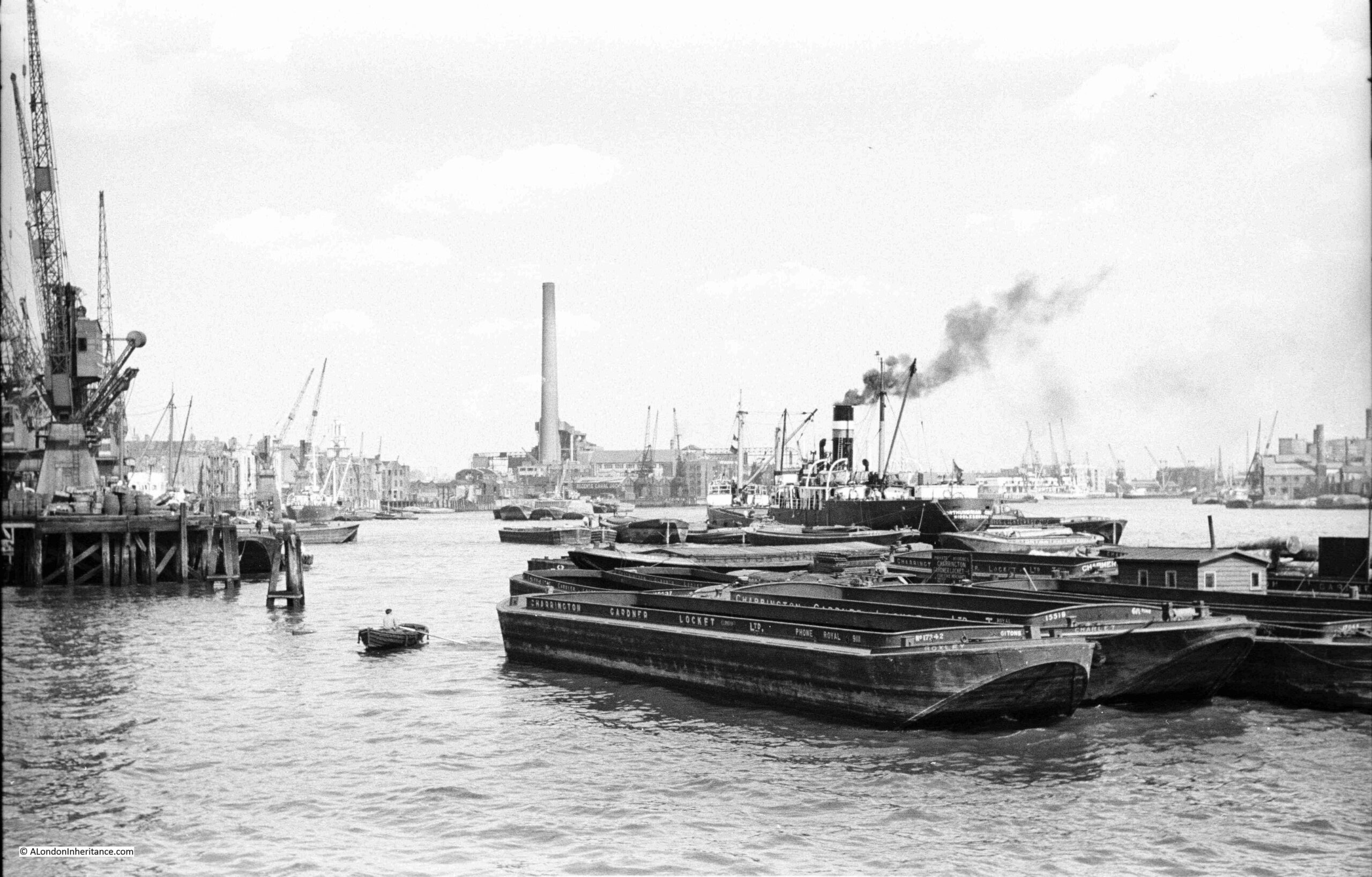
Sunday 30th July at 11:00(Sold Out)Sunday 6th August at 11:00(Sold Out)Thursday 10th August at 13:00(Sold Out)Saturday 19th August at 11:00(Sold Out)Sunday 20th August at 11:00(Sold Out)Thursday 24th August at 13:00(Sold Out)Sunday 27th August at 11:00(Sold Out)- Thursday 31st August at 13:00 (Sold Out)
Sunday 10th September at 11:00(Sold Out)
The title for the walk “Limehouse – A Sink of Iniquity and Degradation” came from the book “Limehouse through Five Centuries” written in 1930 by the Reverend J.G. Birch of St. Anne’s, Limehouse. He used the phrase in his introduction to the book, and also added that he hoped that the book would help dispel this myth.
Limehouse has always had an air of mystery and intrigue, an exotic and dangerous place to those who did not live or work along the river.
The 1916 book Limehouse Nights by Thomas Burke featured a number of short stories centred on Limehouse, the opium dens and the Chinese community, which were also the background to the stories of Dr. Fu-Manchu by Sax Rohmer. The works by Burke and Rohmer featured appalling stereotypical views of the Asian community then living in Limehouse.
Stories about Limehouse exploited themes of violence, crime, sex and drugs and how the import of opium resulted in the exploitation of English women, often to sell opium in the fashionable West End.
The image of Limehouse as a place of intrigue and mystery continues to this day, with the 1994 book Dan Leno and the Limehouse Golem by Peter Ackroyd, on which the 2016 film The Limehouse Golem was based.
Whilst there were opium dens, crime and violence, Limehouse was a hard working place, based around the trade and industry that grew along the Thames. The Chinese population were frequently sailors who had settled in Limehouse and married local women, along with a temporary increase in numbers when ships with Chinese crew docked. Their numbers though were relatively low, not as large as popular literature of the time might suggest.
Limehouse was an early site of ship building. From Limehouse, sailors and traders set out along the Thames to cross the oceans of the world. Industry, warehouses and docks lined the river, with cramped housing alongside polluting factories.
Limehouse provided access to the Thames for the inland waterways, with the Limehouse Cut and the Regent’s Canal providing access to the river from the rest of the country. In the Regent’s Canal Dock (now the Limehouse Basin), ships unloaded all manner of cargo, including coal, timber, fruit and ice.
There was technical innovation, hydraulic power and an electricity generating station running on coal delivered via the river. The London & Blackwall Railway cut through Limehouse on a brick viaduct, paving the way for the Docklands Light Railway.
The decades after the 2nd World War were not kind to Limehouse as trade along the river slowly declined and industry closed or moved away.
From the late 1980s onwards, Limehouse was transformed, with some major projects being driven by the developments on the Isle of Dogs just to the east.
I have long been fascinated by Limehouse, a place that for centuries was shaped by the relationship between the land and the river. Whilst today that contact is maintained by Limehouse Basin, the rest of Limehouse is now just a spectator to the activity on the river.
This walk will explore the history and development of Limehouse from the 15th century to the present day. The people, those who settled in Limehouse, the relationship with the River Thames, trade, waterways, tunnels, streets, pubs and church, along with some of the reality of the opium dens.
As with the Reverend J.G. Birch, my aim with the walk is to dispel some of the myths about Limehouse and focus on the real history of this fascinating part of east London.
The walk will start at Limehouse DLR station and end at Westferry DLR station. It will take around 2 hours 30 minutes and is a walk of slightly over 2 miles.
Wapping – A Seething Mass of Misery
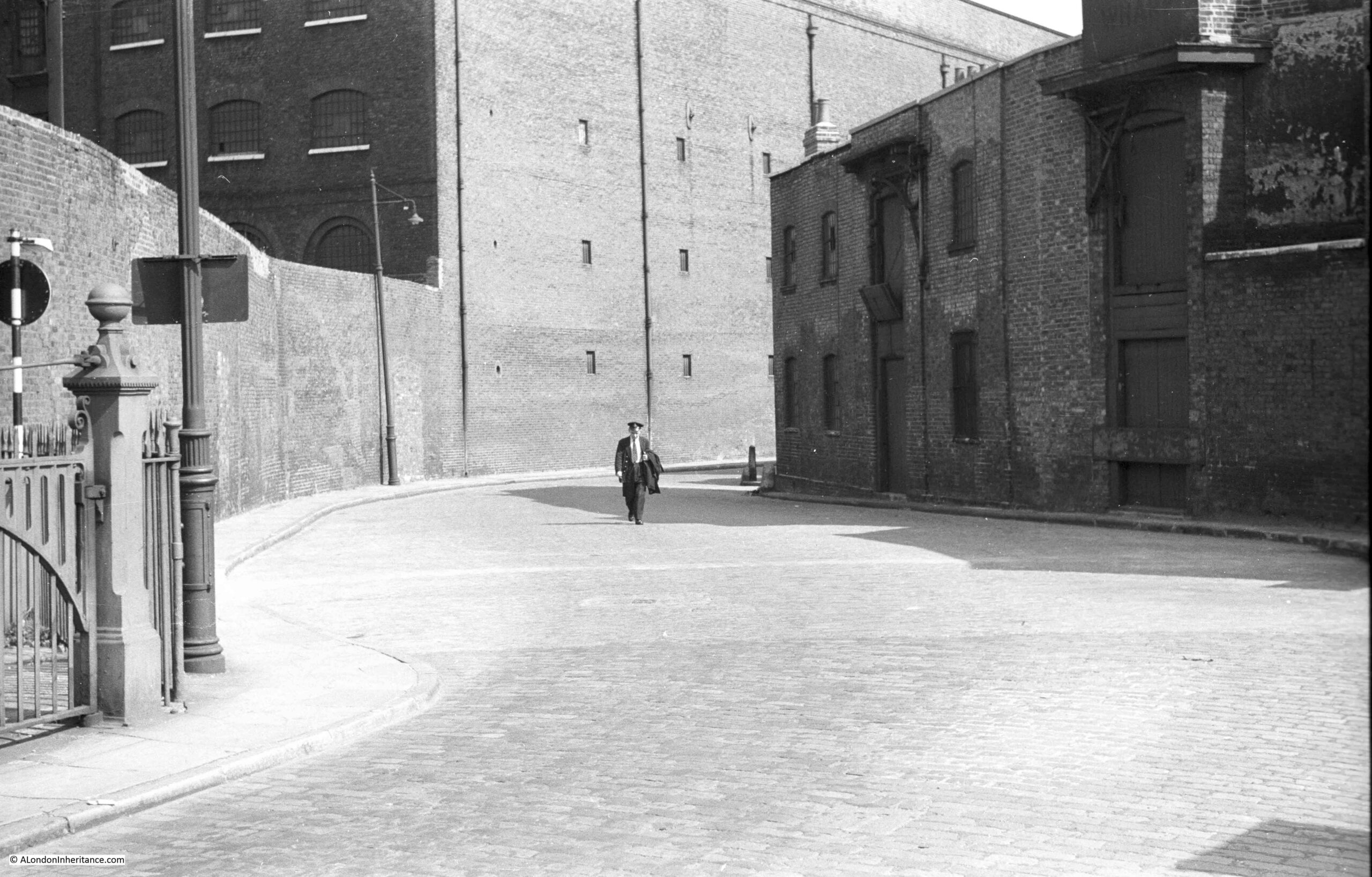
Wapping – A Seething Mass of Misery. So wrote Francis Wey in the 1850s in his book, A Frenchman Sees the English in the Fifties.
As London’s docks expanded to the east, Wapping developed to serve the docks and the river, and this expansion resulted in living conditions that would lead to Francis Wey’s description.
Wapping was different to the rest of east London as it developed a nautical subculture, one that existed to serve and exploit sailors arriving on the ships that would moor on the river, and the docks and wharves that lined the river.
This walk will discover the history of Wapping, and will run from near Tower Hill underground station, along Wapping High Street and Wapping Wall, across the old Ratcliff Highway to Shadwell Overground and DLR stations.
We will explore the development of the docks, the ancient gateways between land and river that are the Thames stairs, lost and surviving pubs, the history of the River Police, a sailor’s experience of Wapping, warehouses, crime and punishment, murders and a burial at a crossroads.
We will also meet some of the people who lived, worked and passed through Wapping, such as the Purlmen who worked on the river, and John Morrison, a ship’s boy on a collier, who in 1832 almost froze to death whilst waiting to row his master back to his ship after a night in Wapping’s pubs.
The walk will use some of my father’s photos to show the area post-war, and will look at how Wapping has developed to become the place we see today, and should be considerably more enjoyable than Francis Wey’s description.
The walk is about 2.5 miles and will take between two and a quarter, and two and a half hours.
The following dates for my tour of Wapping are available to book on Eventbrite. Click on any of the dates to go to the site where they can be book.
Bankside to Pickle Herring Street – History between the Bridges
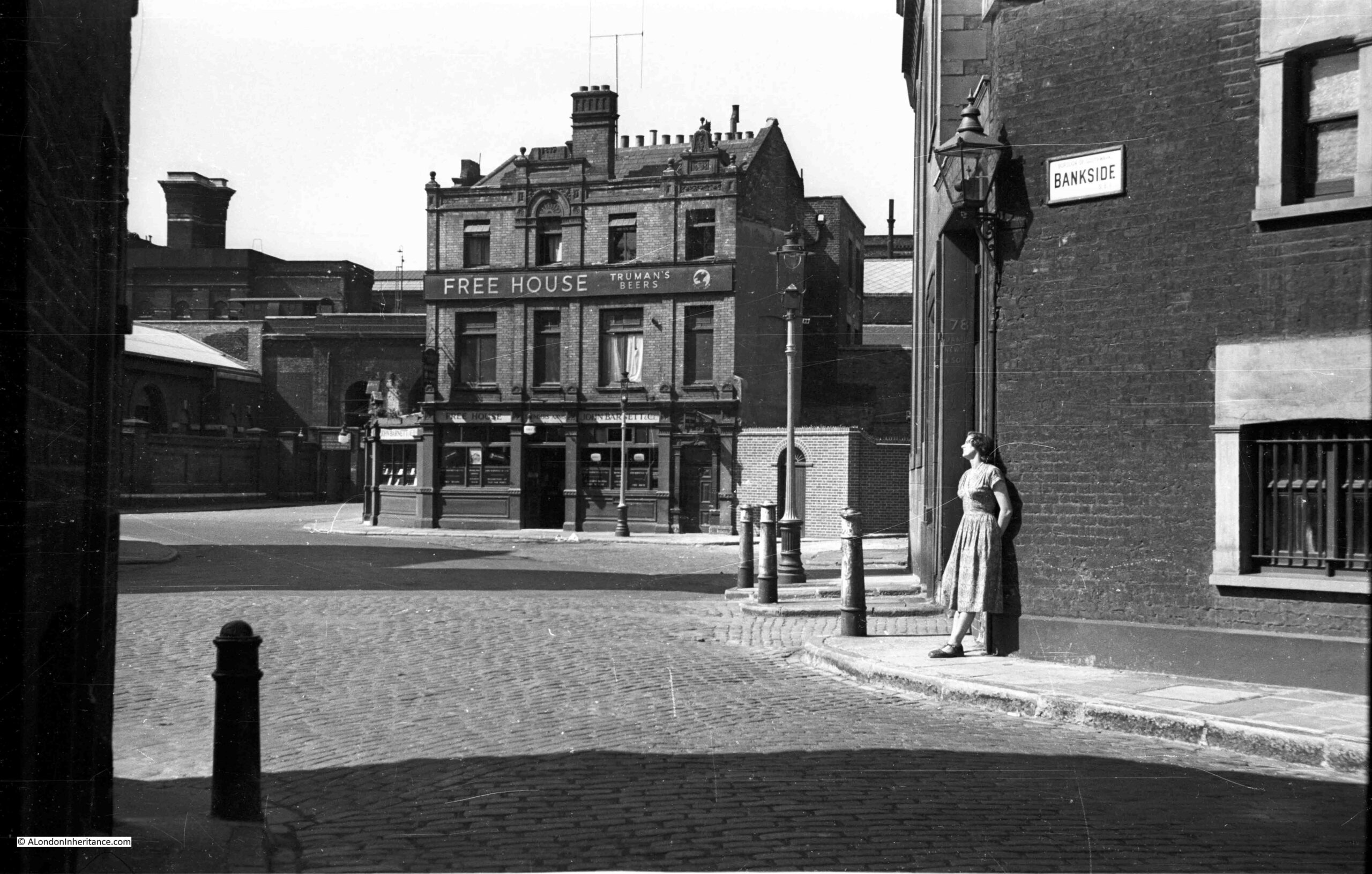
This walk explores the remarkable history of Bankside and Southwark between Blackfriars and Tower Bridges.
Looking at how the river bank along the River Thames has developed, and using my father’s post-war photos to show just how much the area has changed, and what was here when this was a working part of the river.
From the sites of Roman discoveries to recent development of old wharfs and warehouses, the walk will explore pubs, theatres, Thames stairs, lost streets, the impact of electricity generation, fires, alleys, and the people who lived and worked along the river.
The walk will also look at how being opposite the City of London led Bankside and Southwark on a unique path through history.
Lasting around two and a quarter hours, the walk will start near Blackfriars Bridge and end at Tower Bridge.
Full details of the meeting point will be sent in the week prior to the walk.
Dates for 2023 will be added soon.
The South Bank – Marsh, Industry, Culture and the Festival of Britain
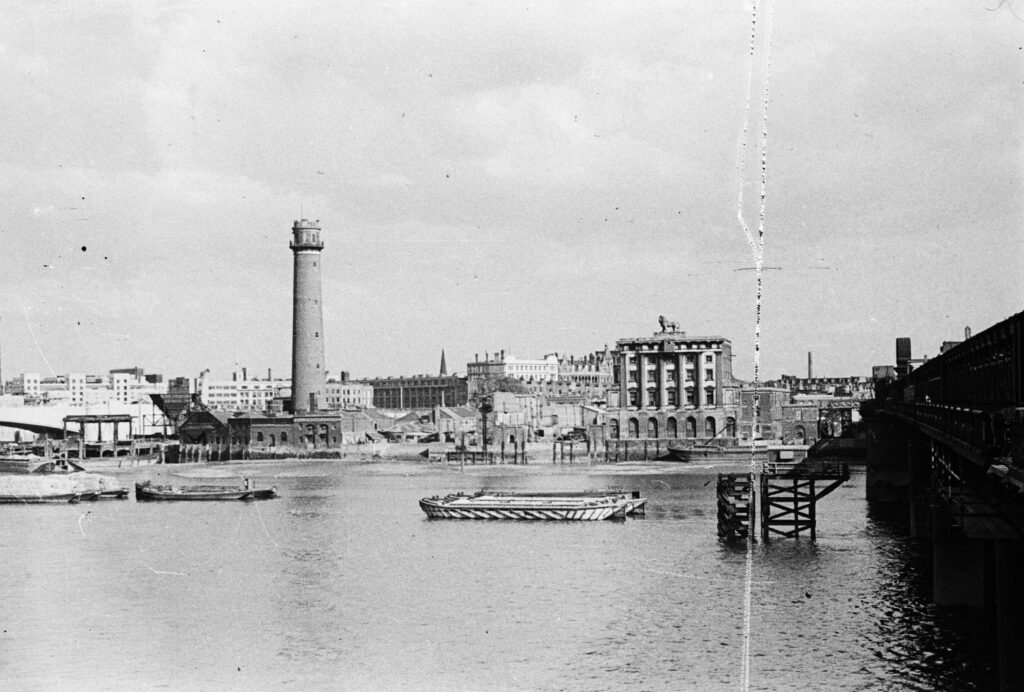
In the 70th anniversary year of the Festival of Britain, come and discover the story of the Festival, the main South Bank site, and how a festival which was meant to deliver a post war “tonic for the nation” created a futuristic view of a united country, and how the people of the country were rooted in the land and seas.
We will also discover the history of the South Bank of the Thames, from Westminster to Blackfriars Bridges, today one of London’s major tourist destinations, and with the Royal Festival Hall and National Theatre, also a significant cultural centre.
Along the South Bank we will discover a story of the tidal river, marsh, a Roman boat, pleasure gardens, industry, housing and crime. The South Bank has been the centre of governance for London, and the area is an example of how wartime plans for the redevelopment of London transformed what was a derelict and neglected place.
Lasting around 2 hours, the walk will start by Waterloo Station and end a short distance from Blackfriars Bridge.
At the end of the walk, we will have covered almost 2,000 years of history, and walked from a causeway running alongside a tidal marsh, to the South Bank we see today.
Dates and links for booking are:
The Lost Streets of the Barbican
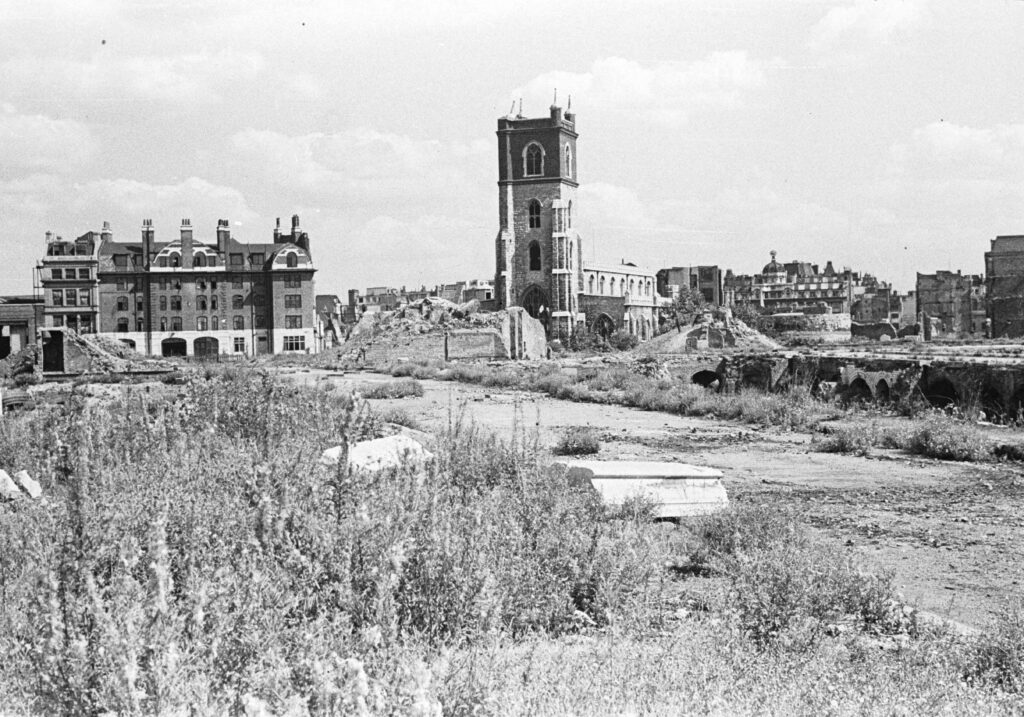
On the evening of the 29th December 1940, one of the most devastating raids on London created fires that destroyed much of the area north of St Paul’s Cathedral and between London Wall, almost to Old Street.
The raid destroyed a network of streets that had covered this area of Cripplegate for centuries. Lives, workplaces, homes and buildings were lost. Well-known names such as Shakespeare and Cromwell and their connection with the Barbican and Cripplegate will be discovered, as well as those lost to history such as the woman who sold milk from a half house, and that artisan dining is not a recent invention.
Out of wartime destruction, a new London Wall emerged, along with the Barbican and Golden Lane estates that would dominate post-war reconstruction. Destruction of buildings would also reveal structures that had been hidden for many years.
On this walk, we will start at London Wall, and walk through the Barbican and Golden Lane estates, discovering the streets, buildings and people that have been lost and what can still be found. We will explore post-war reconstruction, and look at the significant estates that now dominate the area.
Lasting just under two hours, by the end of the walk, we will have walked through almost 2,000 years of this unique area of London, the streets of today, and the streets lost to history.
Dates and links for booking are:
Sunday 21stMay 2023(Sold Out)
I will be adding new dates for the above tours, and new tours in the coming weeks and months which will be listed on this page.

Sunday’s walk along the South Bank was excellent – so informative and with many interesting photographs of its past appearance. I learned so much about sites I had previously walked past without seeing. A real eye opener. David was a brilliant communicator.
The South Bank walk is excellent and highly recommended. In spite of living in the area for 25 years I was introduced to information and sites that I was unaware of. The additional links and recommendations are entertaining and informative and well worth following up.
A fascinating insight into the area surrounding and including the Barbican. I found out lots about the area and will look at it with new eyes in the future. Well worth the money! Thanks
We really enjoyed the Barbican walk today – varied, informative and entertaining. Thanks David.
We really enjoyed the walk yesterday, 18th July, around the Barbican and Golden Lane Estate. It was very interesting learning how London regenerated the area after WW2 and how it still lives side by side with Roman and medieval remains, some of which are in a carpark under London Wall!
Thoroughly enjoyed the Barbican walk yesterday. David is very knowledgeable and entertaining and his father’s photos add an extra dimension to the walk
I think the Lady Holles School sculpture – or one pretty much identical – is now in St Brides Church, Fleet Street, by the font. At any rate it was when I was a boy in the 1960s. On second thoughts, there is also a matching boy, so maybe they came from other charity schools?
I am coming to London for August and September 2022. Wondering if you are giving any walks during that time?
Hello london inheritance,
My name is Chris, read your Greenwich blog fantastic, noticed you have some kayaks pictured, they are ours at London kayak company, we would like to offer you a free trip around Greenwich by kayak for you and some friends, get back to me if interested and we can work out some dates! Chris
just saw on your twitter there’s one spot left for 29 October but alas I shall be away – very much hoping to join you at least once or twice in 2023. thank you for all that you do & share!
Thanks Hannah, yes hopefully more walks in 2023.
Hello
Thanks for a brilliant blog that I stumbled across when searching for historical info about The Angel pub . My wife is a big fan of London social history and I was excited to tell her of my discovery only for her to say to me ‘oh yes London inheritance blog , I love it , it’s the one I am always reading ‘ I was wondering if you were planning guided walks in 2023 ? I’m pretty sure we’d both want to join up for one . Thanks for the great read .
Vincent – thanks for the feedback. Pleased that you are both enjoying the blog. Yes, I will be running some more walks later in the year, probably late spring and summer. David
David – while your articles are always fascinating, they are hard to read. Your margins are much too wide to fit a normal screen, and your photos are far too big. I never enjoy them as much as I feel I should. Can you reduce the formatting size of your emails, but not your length?
Am I the only one who suffers from this issue?
thanks
Charles
Thank you so much for all that you do to inform us about London history, I find it fascinating as my families lived in practically every area in Southwark and Lambeth from the 16th century onwards the first being the Tearoe family who were watermen on the Archbishop’s barge and Sextons at St Mary Lambeth up until the construction of Westminster Bridge. I wrote a history of that family for a member of the family who lived in Canada which runs into many pages.
I have only just found your blog as I was looking for coach makers in Lambeth and was delighted to find your description of Roupell Street as one of my family, a coach trimmer, lived there when the houses were new. Mustn’t bore you with all my stuff but just wanted to say thank you.
What a good idea the walks are and people obviously enjoy them so much. Well done and I look forward to exploring more of your posts.
Best wishes,
Pauline Taylor..
Best wishes
Will there be any Wapping walks, including some /all of the stairs please in August..or any weekend. Thanks.
Hopefully in September
Hello David,
What a treasure trove I have found here with your blog!
My 5th great grandfather was a Butcher named William Cope or Chope, living in Old Gravel Lane, Wapping in the 1730s. His father was a Liverman – have you come across this term?
Further back William’s grandfather Francis Chope was a Marynor – many on the 1646 burial record were, so I deduce this was the old spelling of ‘Mariner’.
I would love to come on the next Wapping Walk you do please!
All the best,
Caroline